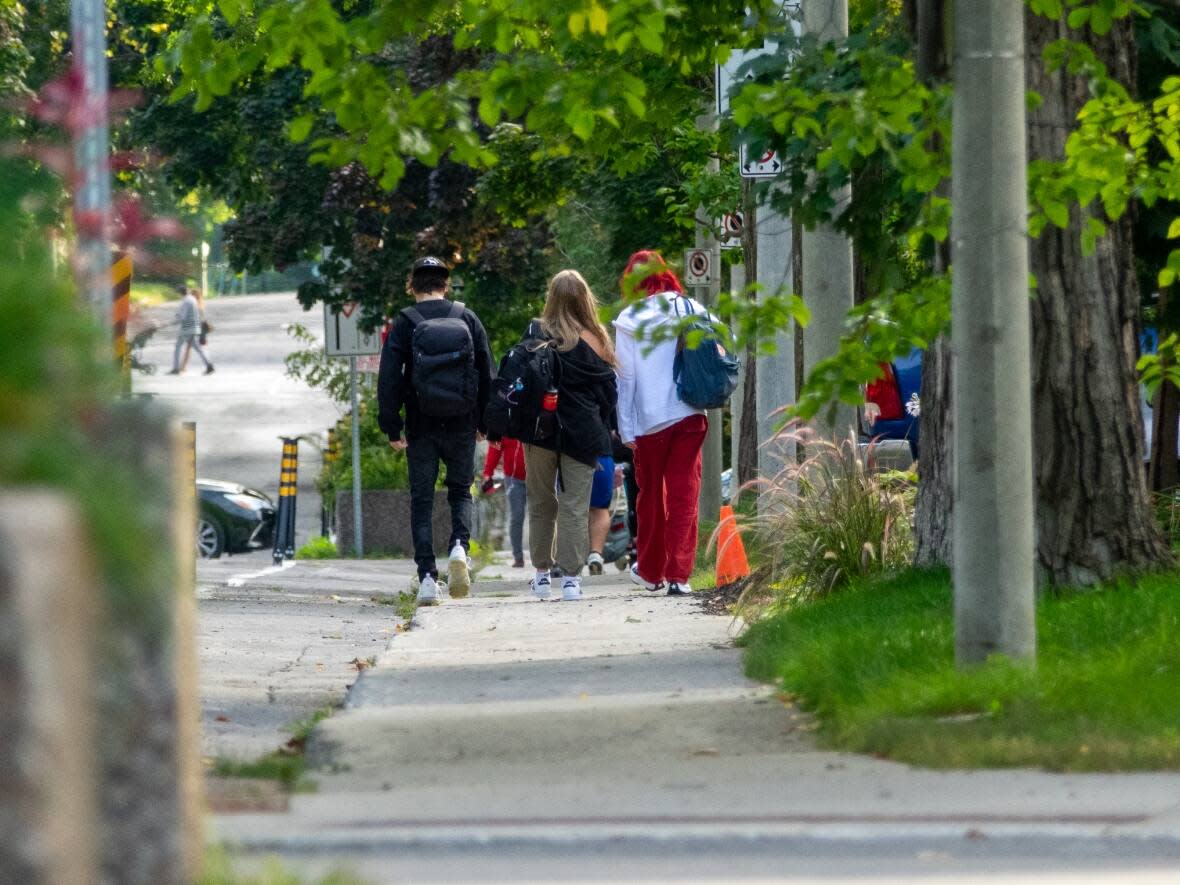COVID trends on downward slope, OPH says

Recent developments:
Ottawa's pandemic trends are stable or dropping.
Wastewater down since summer's peak but has slightly increased as of late.
The latest Ottawa update
COVID-19 indicators from the first week of September demonstrate the nation's capital is on the downslope of the most recent wave, according to Ottawa Public Health (OPH).
But levels remain high in the community and public health officials are warning that the wave isn't over.
With school resuming and colder weather on the horizon, OPH is urging people to continue using layers of protection to guard against the virus.
Provincewide, 74 more deaths were reported as of Friday, with 1,248 people with the illness in hospitals.
Wastewater
The weekly average level of coronavirus in Ottawa's wastewater has declined significantly since this summer's peak in mid-July, but has begun to tick back up since the start of September.
That average is about two-and-a-half times lower than it was at the start of August and near its lowest level of the summer.

Hospitals
Twenty-three Ottawa residents have been admitted to a city hospital with COVID-19, according to OPH's latest update. That's up slightly from earlier this week.
One patient is in intensive care.
The hospitalization figures above don't include all patients. For example, they leave out patients admitted for other reasons who then test positive for COVID-19, those admitted for lingering COVID-19 complications, and those transferred from other health units.
The number that includes those kinds of patients has been dropping since mid-July.
Tests, outbreaks and cases
Testing strategies changed under the Omicron variant, meaning many COVID-19 cases aren't reflected in current counts. Public health officials now only track and report outbreaks in health-care settings.
Ottawa's test positivity rate sits at just below 11 per cent. It has been stable this month.
There are currently 21 active COVID outbreaks in Ottawa. That number has been dropping.
OPH reported 178 more cases and the deaths of five more people who had COVID over the last three days.
Vaccines
As of the most recent weekly update, 93 per cent of Ottawa residents age five and up had at least one COVID-19 vaccine dose, 90 per cent had at least two and 60 per cent at least three.
Twenty-two per cent of Ottawans age 12 and over had at least four. Children 12 to 17 are only eligible if they're significantly immunocompromised.
About 7,000 residents under age five have had a first dose, which is about 15 per cent of Ottawa's population of that age.
More than 2.6 million COVID vaccine doses have now gone to that city's residents.
Across the region
Spread
As of the most recent update, wastewater levels are high, but stable or dropping in Kingston after rising for about two weeks. The most recent data is from earlier this week.
They're decreasing in Smiths Falls, Casselman, and have ticked down somewhat in Kemptville. They're stable at a high level in Brockville and stable and low in the Eastern Ontario Health Unit (EOHU)'s other sites, which now includes Morrisburg.
Hospitalizations and deaths
Western Quebec's health authority CISSSO is reporting 79 COVID hospitalizations there, which has been slowly declining. Two of those patients are in intensive care.
Eastern Ontario communities outside Ottawa are reporting about 39 COVID hospitalizations, including 11 patients in intensive care. Recent growth in those numbers is being driven by the Kingston area and EOHU.
That count doesn't include Hastings Prince Edward (HPE) Public Health, which has a different counting method. Its 21 COVID hospitalizations are high and stable, with one ICU patient.
Vaccines
Across eastern Ontario, between 81 and 92 per cent of residents age five and up have received at least two vaccine doses and between 52 and 64 per cent of those residents have had at least three.
All children age five to 11 in Ontario qualified for a first booster dose as of Aug. 31.

